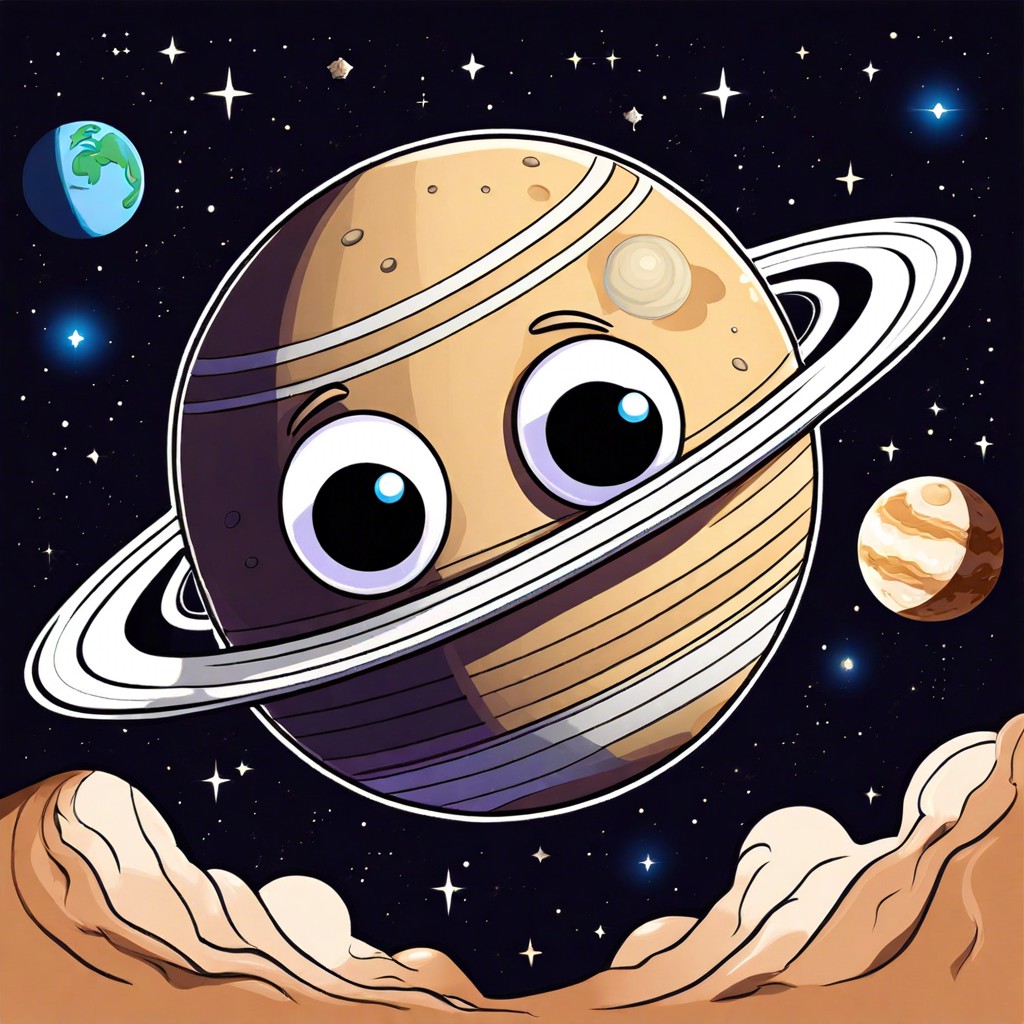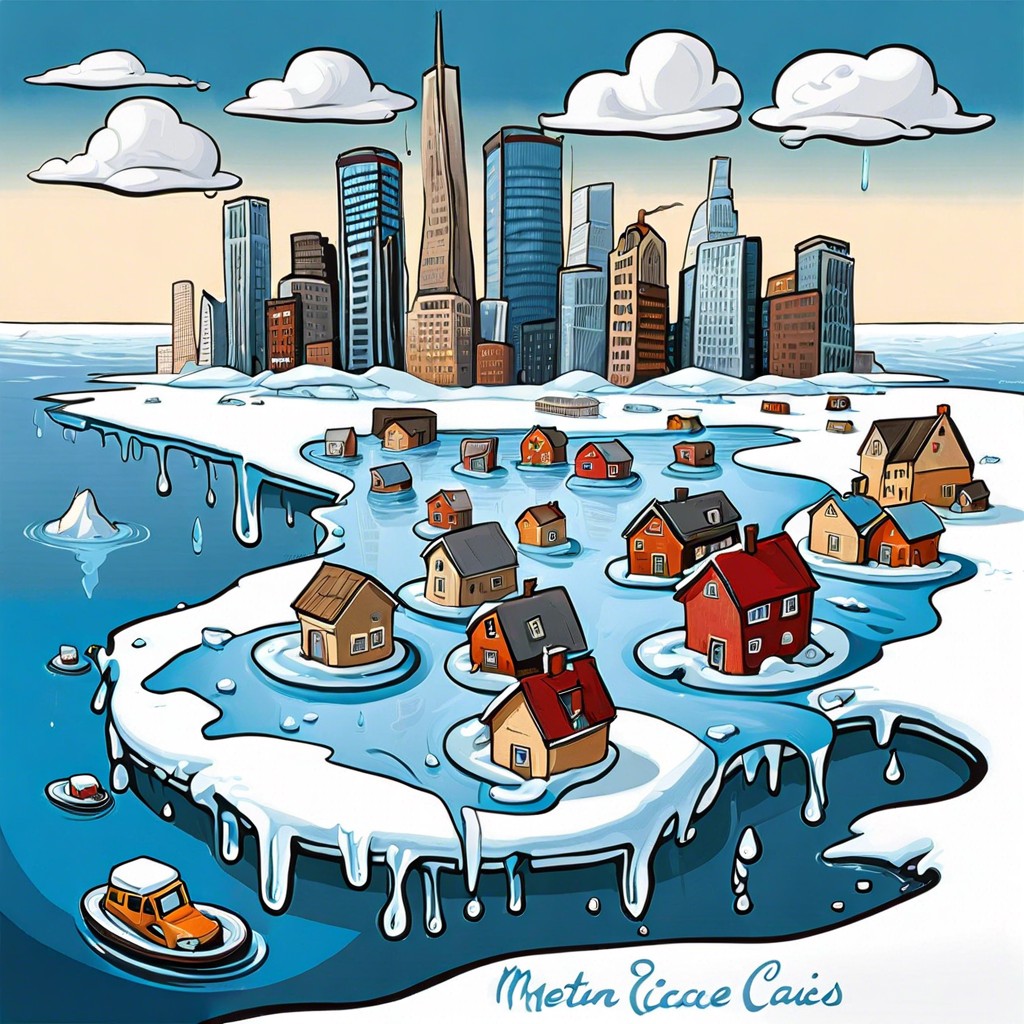Discover how life and our view of the sky would change if Saturn took the place of our Moon.
Imagine looking up at the night sky and seeing Saturn, rings and all, looming as our moon. This cosmic twist would make the full moon look like a dim flashlight. Curious about how having the gas giant as our closest neighbor would rock our world—literally and figuratively? Buckle up, space cadet. We’re diving into orbital chaos, climate rollercoasters, gravitational gymnastics, dazzling night skies, and the sci-fi dreams of colonizing Saturnian moons. Trust me, you don’t want to miss this interstellar brainstorm.
Key takeaways:
- Earth’s orbit disrupted by Saturn
- Climate chaos with extreme weather patterns
- Saturn’s gravitational effects cause geological changes
- Night sky transformed with Saturn’s rings
- Enhanced space exploration and tourism opportunities
Orbital Dynamics and Tidal Effects

Saturn replacing the Moon would send the laws of physics into a tizzy. Imagine the colossal ringed planet dominating the night sky. Awesome? Absolutely! Terrifying? Even more so!
First, Saturn’s massive size would throw Earth’s orbit into a dizzying dance. Our planet might wobble like a toddler discovering roller skates. Not ideal.
Then there’s the tidal chaos. Our once tranquil oceans, now wrestling with Saturn’s immense gravity, would transform into wild, frothy giants. Coastal cities would need to swap skyscrapers for surfboards.
But wait, there’s more! Saturn’s rings, spectacular as they are, would cast fluctuating shadows, turning day and night cycles into a trippy light show. Shakespearean tragedy meets a strobe-lit dance floor.
Lastly, without the Moon’s stabilizing pull, Earth’s axial tilt could go haywire. We could get summer snow and winter heatwaves, making packing for vacations a tad more complicated. Imagine packing a parka and flip-flops for the same trip. Adventure awaits!
Impacts On Earth’s Climate and Weather
Saturn’s immense size and powerful gravitational pull would have profound effects on Earth’s climate and weather patterns. Imagine daily hurricane-level winds or constant turbulence in our skies. Yikes!
Firstly, Saturn’s massive gravitational influence would cause dramatic tidal forces, not just in the oceans but also in the atmosphere. We’d experience extreme tides and erratic weather.
The increase in tidal forces would likely lead to more active tectonic movements, causing a surge in volcanic eruptions. Volcanic activity could spew ash and gases into the atmosphere, altering the climate and potentially blocking sunlight.
Also, Saturn’s dense ring system would reflect more sunlight, casting eerie shadows and altering seasonal cycles. Longer nights or multi-colored skies anyone?
Finally, Earth’s axial tilt might become less stable, intensifying seasonal variations. Winters colder than your freezer and summers hotter than a frying pan. Quite the weather chaos, isn’t it?
In conclusion, Saturn as our moon would push Earth’s climate into a surreal rollercoaster of extremes.
Gravitational Influence On Earth
Imagine trying to walk a straight line while a giant cosmic hand tugs at your waist. That’s life if Saturn replaced the Moon. With its immense mass, Saturn’s gravitational pull would initiate some pretty wacky changes:
First up, your humble tide pools would turn into monstrous waves. Forget surfing—think Noah’s Ark.
Next, Earth’s rotation could slow down, turning our 24-hour day into something more akin to a Netflix binge-watch marathon.
And those tectonic plates? They’d get a workout. Expect more earthquakes and volcanic activity, adding a touch of apocalyptic drama to daily life.
Saturn’s might would even stretch geological structures. Mountains might rise higher, valleys could deepen, all while we cling to Earth’s crust like reluctant barnacles.
Intrigued? Terrified? Either way, Saturn’s gravitational shenanigans would make sure life on Earth is never boring.
Changes to Night Sky and Astronomy
Imagine looking up at the night sky and seeing Saturn instead of our lovely lunar companion. First off, goodbye delicate crescent moon phases and hello to an enormous, dazzling ringed spectacle. Saturn’s rings alone would paint the sky with an unforgettable light show, shimmering in a way that would make the Northern Lights look like a nightlight.
Stargazing would never be the same. Amateur astronomers are used to counting the craters on the Moon. With Saturn, they’d need a checklist for its moons—82 little satellites, FYI! This backyard hobby might morph into an intense game of ‘find the tiny moon.’
Finally, forget light pollution from cities. Saturn’s reflective rings could outshine even Las Vegas. Astronomers would probably need super-specialized telescopes just to see past the bling. It’s like trying to find a candle in front of a bonfire. Sounds pretty wild, doesn’t it? Not to mention, NASA would need an entirely new playbook for studying the cosmos with that showstopper in the way.
Possibilities for Space Exploration and Colonization
Suddenly, our dream of colonizing space would get a massive upgrade! Forget tiny Mars rovers; imagine moon rovers on Saturn’s rings. We’d have a celestial playground right in our backyard.
First off, those rings. They aren’t just eye candy. They’re filled with ice, rock, and dust. Mining them could yield resources beyond Earth’s wildest dreams. Building materials, anyone?
Thanks to Saturn’s formidable gravitational influence, jumping from one space station to another could be more akin to interplanetary parkour. The gravity assist from Saturn might make interstellar travel more fuel-efficient. Think cosmic leapfrogging!
Lastly, it would be one heck of a tourist destination. Space hotels with views of Saturn’s storms. Imagine sipping coffee while gazing at swirling gas giants from your room.
Cutting-edge science and unparalleled vistas? Sign me up, Captain Kirk!




